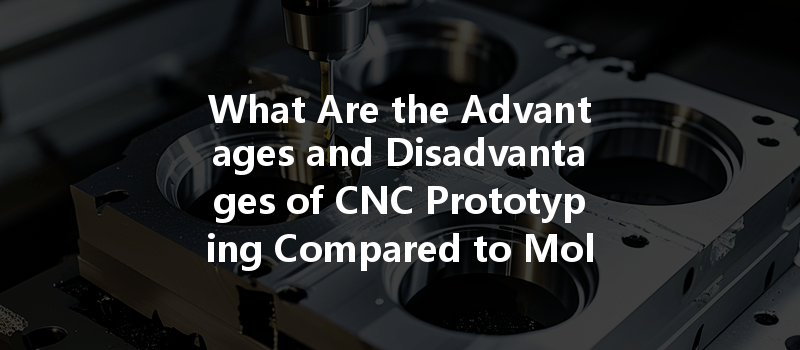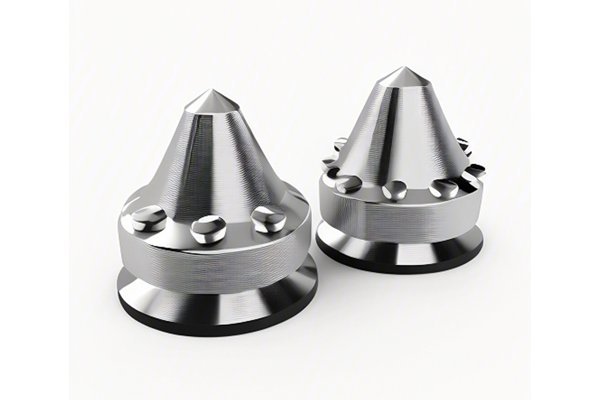Did you know that up to 80% of product development time can be spent on prototyping? As businesses strive to innovate and bring products to market faster, the methods they choose for prototyping can significantly impact their success. CNC (Computer Numerical Control) prototyping and mold manufacturing are two prominent techniques that engineers and designers often consider. In this blog, we will delve deep into the advantages and disadvantages of CNC prototyping compared to mold manufacturing, providing insights that can help you make informed decisions for your projects.
—
Understanding CNC Prototyping
CNC prototyping involves the use of precise computer-controlled machinery to create a prototype from various materials including metals, plastics, and composites. This method is highly versatile, allowing for the production of intricate designs with high accuracy. CNC prototyping typically involves the following processes:
Understanding Mold Manufacturing
Mold manufacturing, on the other hand, is a more traditional technique that involves creating a mold into which material (such as plastic or metal) is poured or injected. The key stages of mold manufacturing include:
—
Advantages of CNC Prototyping
One of the major advantages of CNC prototyping is speed. The entire process from design to physical prototype can be completed within days, while mold manufacturing can often take weeks due to the time required for mold design and creation.
With CNC prototyping, changes to the design can be made quickly and easily. If an adjustment is needed after production has started, the CNC program can be modified without the extensive costs associated with creating a new mold.
CNC prototyping usually has lower setup costs compared to mold manufacturing, particularly for smaller production runs. This makes it an ideal option for startups and businesses looking to produce limited quantities of a prototype.
CNC machines deliver remarkable precision, producing prototypes that match the CAD design closely. This is invaluable for industries where accuracy is crucial, such as aerospace, automotive, and electronics.
CNC machines can work with a wide array of materials, allowing for testing prototypes in the most suitable materials for the final product, whether that be metals, plastics, or wood.
—
Disadvantages of CNC Prototyping

While CNC prototyping is cost-effective for small runs, the per-unit cost can become higher when producing larger batches compared to mold manufacturing, which often benefits from economies of scale.
CNC machining is generally not as suitable for mass production compared to mold manufacturing. For high-volume production runs, the speed and efficiency of molds often outweigh the benefits of CNC.
The subtractive nature of CNC prototyping can lead to material waste, especially when constructing complex designs. This can be less environmentally friendly compared to additive manufacturing techniques.
—
Advantages of Mold Manufacturing
Mold manufacturing becomes increasingly cost-effective as production volumes rise. Once the mold is created, producing additional items costs significantly less per unit than CNC.
Mold manufacturing often provides a smoother surface finish than CNC machining, especially for plastic products where surface aesthetics are critical.
Mold manufacturing excels in producing consistent and identical parts throughout the production run. This uniformity is essential for products requiring precise fit and finish.
—
Disadvantages of Mold Manufacturing
Creating a mold is often costly and time-consuming. The need for precision during design and manufacturing means that the initial investment can be quite high, making it less feasible for startups.
Once a mold is created, making changes requires additional time and money. This inflexibility can be a major disadvantage if product designs are likely to change during development.
The lead time to create molds can be extended, sometimes taking weeks or even months to get from design to prototype, which can hinder rapid product development cycles.
—
In summary, both CNC prototyping and mold manufacturing possess their unique advantages and disadvantages that can substantially impact your product development process. CNC prototyping is best suited for low-volume, high-precision needs, especially during the early stages of product development. On the other hand, mold manufacturing shines in mass production scenarios where cost efficiency and consistency are critical.
As businesses navigate the complexities of modern manufacturing, understanding the right prototyping method to choose is crucial. Whether you are a startup looking to innovate or an established company re-evaluating your production strategies, considering your specific needs and constraints can lead you to the most effective manufacturing solutions.
Reflecting on your production process, think carefully about the trade-offs that CNC prototyping and mold manufacturing present. Ultimately, selecting the correct approach can significantly influence not only your budget and timeline but also the quality and success of your final product.






